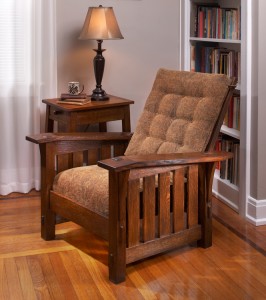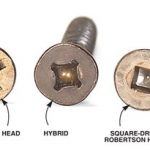We may receive a commission when you use our affiliate links. However, this does not impact our recommendations.
 Early on in my woodworking career, I fancied myself a designer. I wanted to create new and exciting stuff and managed to have my work accepted in some pretty good arts & crafts shows. My qualifications? I had read “A Cabinetmaker’s Notebook”, had the tools, access to wood and I was willing to experiment. Thirty years later I still have some of those pieces and a few have sidled their way into print in Popular Woodworking Magazine.
Early on in my woodworking career, I fancied myself a designer. I wanted to create new and exciting stuff and managed to have my work accepted in some pretty good arts & crafts shows. My qualifications? I had read “A Cabinetmaker’s Notebook”, had the tools, access to wood and I was willing to experiment. Thirty years later I still have some of those pieces and a few have sidled their way into print in Popular Woodworking Magazine.
That time wasn’t wasted, but both my woodworking and design skills took a great leap forward when I started building reproductions. I blame Gustav Stickley because in one of his books he mentioned that a good designer needed to have a thorough knowledge about everything that was done previously. That struck a chord with me and I followed that advice. The most effective way to learn is from mistakes and the good news is that it is far easier and less painful to learn from the mistakes of others than it is to repeat them for yourself.
It’s easy to find design advice that includes formulas and recipes. Those things work if what you want to design is “cookie cutter” pieces. The better way to develop your eye is to simply look at and build as many pieces of furniture as you can. When you do that you soon realize that the good stuff (of any period) doesn’t follow the rules, it rewrites the rules.  Here at Popular Woodworking Magazine we tend to be history geeks as well as woodworking geeks. In addition to design skills, studying older pieces will enhance your engineering skills as well. Visit the museums (online and in person) to see examples of what has survived, but also spend time at antique malls and flea markets to see what has failed or fallen short of the ideal.
Here at Popular Woodworking Magazine we tend to be history geeks as well as woodworking geeks. In addition to design skills, studying older pieces will enhance your engineering skills as well. Visit the museums (online and in person) to see examples of what has survived, but also spend time at antique malls and flea markets to see what has failed or fallen short of the ideal.
If you can’t build every piece you find interesting for yourself, the next best thing is to model it in SketchUp. That’s the process we use for planning what you eventually see in the magazine. The image at right gives you an idea of the process, and this post explains in detail how to import and scale a photo in SketchUp (If your interested in the entire workflow for our illustrations, you can read about it here). Exploring old furniture and figuring out how the internal parts go together to achieve the exterior appearance teaches you more than following someone else’s step-by-step process of building.
 When you return to creating your own designs, you’ll be far better equipped and enjoy better results. The sideboard at left is my original design, but it contains a bunch of elements that I lifted from older pieces. Those details are things I wouldn’t have thought of on my own, but I will take credit for combining them and turning some upside down. That’s really the essence of good design for there aren’t many truly unique things you can do when you cut up parts of trees and turn them into places to keep your stuff. As T.S. Eliot said:
When you return to creating your own designs, you’ll be far better equipped and enjoy better results. The sideboard at left is my original design, but it contains a bunch of elements that I lifted from older pieces. Those details are things I wouldn’t have thought of on my own, but I will take credit for combining them and turning some upside down. That’s really the essence of good design for there aren’t many truly unique things you can do when you cut up parts of trees and turn them into places to keep your stuff. As T.S. Eliot said:
“One of the surest tests [of the superiority or inferiority of a poet] is the way in which a poet borrows. Immature poets imitate; mature poets steal; bad poets deface what they take, and good poets make it into something better, or at least something different.The good poet welds his theft into a whole of feeling which is unique, utterly different than that from which it is torn; the bad poet throws it into something which has no cohesion. A good poet will usually borrow from authors remote in time, or alien in language, or diverse in interest.”
If you want to learn how to use SketchUp to design your projects, this book will help.
Here are some supplies and tools we find essential in our everyday work around the shop. We may receive a commission from sales referred by our links; however, we have carefully selected these products for their usefulness and quality.









I think that this is why I kept all of my Popular Woodworking and Woodworking magazines. You get more of the stories behind the projects versus the ‘insert tab A into slot B’ projects in other magazines. Most of those went into the donation box while culling for moving.
BTW, I would like to thank Mr. Lang for his books on both the Craftsman furniture and Craftsman interiors. We are building a new house and using many of the trim designs throughout.
Jay